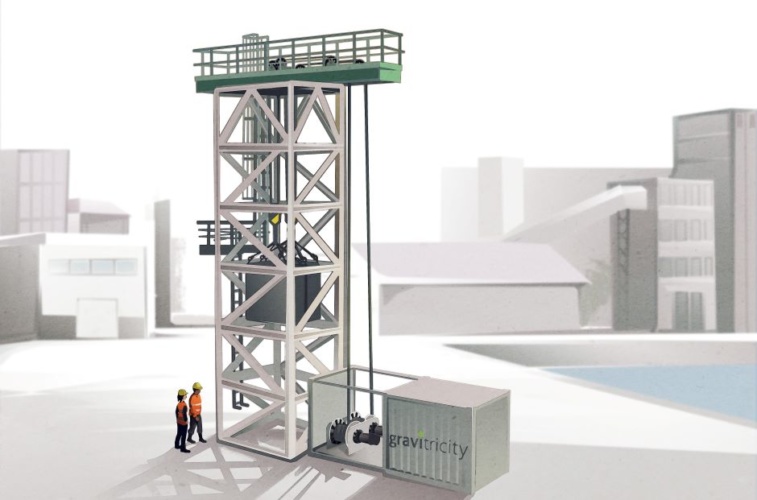
The contract is being fulfilled for Gravitricity, developers of an energy storage system that works by raising multiple heavy weights – totalling up to 12,000 tonnes – in a deep shaft and releasing them when energy is required.
Gravitricity set to launch stored energy demonstrator
Work on the custom-built winches and control system has started at a Huisman factory in the Czech Republic and is expected to complete in December. The lattice tower for Gravitricity’s 250kW demonstrator is being fabricated by Kelvin Power in Leicester.
The full 16m high rig will then be assembled at a grid-connected site at the port of Leith for testing to begin in spring 2021.
Gravitricity have recently raised over £1.5m for their technology development through a crowdfunding campaign and have also received a £640,000 grant from Innovate UK.
In a statement, Gravitricity Lead Engineer Miles Franklin said: “Our demonstrator will use two 25-tonnes weights suspended by steel cables. In one test we’ll drop the weights together to generate full power and verify our speed of response. We calculate we can go from zero to full power in less than a second – which can be extremely valuable in the frequency response and back-up power markets
“We’ll then run tests with the two single weights, dropping one after the other to verify smooth energy output over a longer period, alongside a programme of other tests to demonstrate and refine the full capabilities of the system. This two-month test programme will confirm our modelling and give us valuable data for our first full-scale 4MW project which will commence in 2021.”
Gravitricity plan to roll out their technology in disused mine shafts worldwide. Read more about this in the September 2020 edition of The Engineer.
KEY FACTS
- Rig height – 16 metres
- Weights – 2 x 25 tonnes
- Weigh composition – steel vessels filled with iron ore
- Cables – steel
- Stroke – 7 metres
- Time to drop (full power – 250kW) – 14 seconds - 0.6 m/s (1.3 mph)
- Half power (125kW) – 28 seconds
Source: Gravitricity




Nanogenerator consumes CO2 to generate electricity
Whoopee, they've solved how to keep a light on but not a lot else.